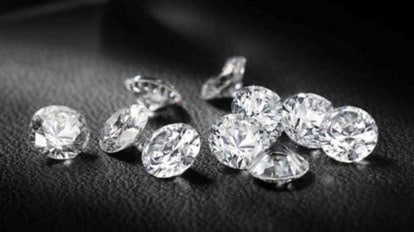Introduction to Lab Grown Diamonds
In the propelling universe of fine pearls, lab grown diamonds have removed their own forte. In case you’re considering placing assets into a lab grown diamond, understanding the affirmation and reviewing frameworks is pressing. Two unquestionable establishments in this space are IGI (Worldwide Gemological Association) and GIA (Gemological Foundation of America). With everything taken into account, how do these two giants heap confronting each other?
What Are Lab Grown Diamonds?
Lab grown diamonds, as the name proposes, are diamonds made in a laboratory setting rather than being mined from the Earth. These gems have a comparable physical, substance, and optical properties as ordinary diamonds yet are made through imaginative cycles igi vs gia lab grown. The key difference? They needn’t bother with the colossal regular impact related with ordinary mining.
How Lab Grown Diamonds Are Made
Lab grown diamonds are made using two fundamental systems: High Pressure High Temperature (HPHT) and Substance Smoke Oath (CVD). The HPHT technique imitates the ordinary conditions under which diamonds structure, applying phenomenal strain and temperature to carbon. CVD, on the other hand, incorporates making a plasma field that stores carbon particles onto a substrate to approach a diamond. The two techniques bring about wonderful, great diamonds, yet the cycle and development behind them can contrast.
Diagram of IGI and GIA
With respect to ensuring lab grown diamonds, IGI and GIA are two of the most seen names in the business. Regardless, what exactly do they bring to the table?
What is IGI?
The Overall Gemological Association (IGI) is known for its extensive and available exploring reports. Spread out in 1975, IGI offers an extent of organizations including diamond assessing, gem recognizing verification, and assessment. IGI’s reports are for the most part used by retailers and customers the equivalent and are regarded for their clarity and detail.
What is GIA?
The Gemological Foundation of America (GIA) is perhaps the most eminent and respected name in gemology. Laid out in 1931, GIA has set the standard for diamond assessing with its careful and standardized checking on system. Their reports are prominent for their precision and are seen as the benchmark in the business.
Connection Measures
To make an informed choice among IGI and GIA for lab grown diamonds, we ought to bounce into a couple of key norms:
Confirmation and Assessing Standards
IGI Confirmation
IGI’s checking on reports for lab grown diamonds are concentrated and integrate positive information about the diamond’s cut, assortment, clarity, and carat weight. IGI uses experienced gemologists who use advanced equipment to ensure exact looking into. While IGI is known for its availability and comprehensive reports, it at times faces investigation concerning the consistency of its inspecting rules.
GIA Endorsement
GIA’s assertion is extensively seen for its extreme adherence to assessing standards. GIA uses a standardized exploring scale and intensive testing frameworks to ensure that every diamond is exactly assessed. Their reports are seen as the gold standard in the business, giving point by point information that is trusted by jewel trained professionals and customers the equivalent.
Diamond Quality and Appraisal
Cut, Assortment, Clarity, Carat
Both IGI and GIA survey diamonds considering the four Cs: cut, assortment, clearness, and carat weight. The cut implies how well a diamond has been formed and faceted, impacting its magnificence. Assortment gauges the color of the diamond, with a scale going from D (dry) to Z (light yellow or brown). Clearness assesses the presence of inside or external imperfections, and carat weight shows the size of the diamond.
Lab Grown Focal points
While checking on lab grown diamonds, both IGI and GIA use relative standards to survey quality. In any case, the assessing of lab grown diamonds could a portion of the time at any point differ to some degree in view of the noteworthy qualities of these pearls. For instance, lab grown diamonds could show different consolidations stood out from typical diamonds, which can impact their exploring.
Customer Trust and Reputation
IGI’s Market Position
IGI is overall around regarded in the business and is known for its straightforward assessing reports. Regardless, it has stood up to some examination for anomalies in assessing appeared differently in relation to GIA. Notwithstanding this, IGI stays a trusted in name among various retailers and buyers, especially for those searching for regard and quick and dirty reports.
GIA’s Market Position
GIA’s representing precision and it is unparalleled to unwavering quality. The foundation’s careful standards and thorough reports are significantly regarded by both industry specialists and customers. GIA’s assessing is ordinarily viewed as the most trustworthy benchmark, which can be vital for high-regard purchases.
Bit by bit guidelines to Pick either IGI and GIA
Individual Tendencies
While picking either IGI and GIA, contemplate your own tendencies and prerequisites. Accepting you regard cost-ampleness and point by point itemizing, IGI might be the better choice. Expecting you center around broad affirmation and unwavering quality, GIA could be the best methodology.
Hypothesis Worth
For those placing assets into diamonds, GIA’s certification could extend more comfort on account of its spread out standing. Regardless, IGI’s reports can anyway give huge information and certification, especially for individuals who would prefer not to spend so a great deal.
Resale Worth
GIA-ensured diamonds much of the time have better resale regard due to the foundation’s strong market reputation. If you expect to trade your diamond later on, a GIA affirmation could really offer an unrivaled benefit from theory.
Conclusion
Picking either IGI and GIA for lab grown diamonds in the end slips to your own tendencies and requirements. The two foundations offer critical assertion and assessing organizations, yet they deal with different necessities and spending plans. Whether you pick IGI for its receptiveness or GIA for its popular accuracy, understanding the characteristics and weaknesses of each can help you with seeking after an informed decision. Remember, paying little heed to which affirmation you settle on, the fundamental viewpoint is picking a diamond that obliges your style and compares your suppositions.



:max_bytes(150000):strip_icc()/alekon-pictures-yj4kwA4h_Ms-unsplash-230509491f114970902d0e9aefb37850.jpg)

